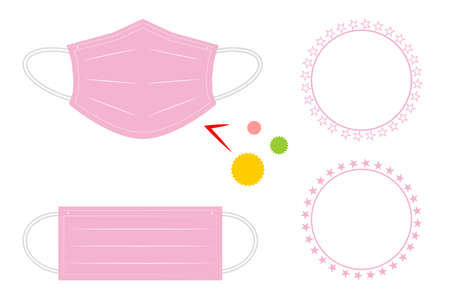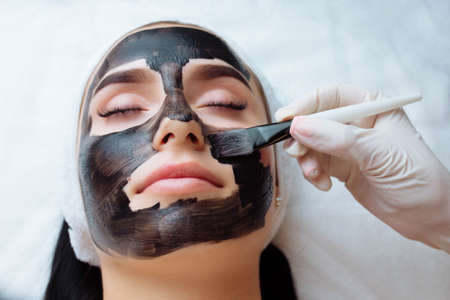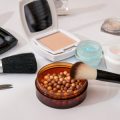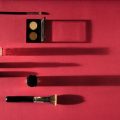What is LED Light Therapy and How Does it Work?
LED light therapy is a non-invasive skincare treatment that uses different wavelengths of light to target various skin concerns. Originally developed by NASA for wound healing, this technology has become a hot trend in American skincare routines, thanks to its ability to address issues like acne, wrinkles, and redness without pain or downtime.
The Science Behind LED Light Therapy
LED stands for Light Emitting Diode. When these diodes emit specific colors (or wavelengths) of light, they penetrate the skin at different depths. Each color triggers unique reactions:
| Light Color | Wavelength | Main Benefits |
|---|---|---|
| Red | ~630-700 nm | Boosts collagen, reduces fine lines and wrinkles |
| Blue | ~405-470 nm | Kills acne-causing bacteria, helps with breakouts |
| Green | ~520-560 nm | Evens skin tone, reduces pigmentation |
| Yellow | ~570-590 nm | Soothes sensitive skin, reduces redness |
The process is simple: the LED device emits light onto the skin, which cells absorb as energy. This energy stimulates cellular processes like healing, collagen production, and inflammation reduction—depending on the light color used.
Common Types of LED Devices in the US Market
Americans have access to a wide range of LED light therapy products. Here are the most popular options:
| Device Type | Description | Where You’ll See Them |
|---|---|---|
| LED Face Masks | Wearable masks that cover the entire face; deliver multiple light colors at once or individually. | At-home use; Amazon, Sephora, dermatology clinics. |
| Handheld Wands or Panels | Portable devices used to target small areas or specific concerns. | At-home use; drugstores, beauty retailers. |
| Professional In-Office Machines | Larger and more powerful units found in med spas and dermatologist offices. | Spa treatments, dermatology appointments. |
Why Is It So Popular in American Skincare?
The main reasons Americans love LED light therapy are:
- No needles or downtime: Unlike lasers or injectables, there’s no pain or recovery time.
- User-friendly: At-home masks make it easy to get professional-style results while watching TV or relaxing.
- Tackles multiple issues: One device can help with acne, aging signs, and inflammation just by switching modes.
- Celeb endorsements: Many celebrities share their glowing results on social media, fueling interest nationwide.
- Evolving tech: New devices keep hitting shelves with improved comfort and safety features tailored for American consumers.
In short, LED light therapy combines cutting-edge science with convenience—making it a go-to choice for those looking to boost their skin health without hassle or risk.
2. Potential Benefits Backed by American Dermatologists
LED light therapy has gained a lot of attention in the United States for its skin-enhancing benefits. Many American dermatologists and skincare experts support its use, especially for people looking to address common skin concerns at home.
How Does LED Light Therapy Work?
LED masks use specific wavelengths of light, such as red or blue, to target different layers of the skin. This non-invasive technology is designed to trigger natural processes that help repair and rejuvenate your skin without causing pain or downtime.
Expert-Backed Benefits
| Skin Concern | LED Color | Expert Insights |
|---|---|---|
| Acne Reduction | Blue Light | US dermatologists report that blue light targets acne-causing bacteria, reducing breakouts and inflammation. It’s often recommended for teens and adults struggling with mild-to-moderate acne. |
| Anti-Aging / Wrinkle Reduction | Red Light | Red light is widely praised by American skin specialists for boosting collagen production, smoothing fine lines, and improving overall skin texture. Patients often see firmer, more youthful-looking skin over time. |
| Reducing Redness & Sensitivity | Yellow/Amber Light | Certain US dermatologists suggest yellow or amber LEDs can calm redness, soothe sensitive skin, and promote faster healing post-procedure. |
| Improving Skin Tone & Brightness | Combination (Red/Blue/Yellow) | A mix of different LED lights can enhance brightness, even out skin tone, and give a healthy glow—benefits frequently highlighted in American beauty clinics. |
What Do US Experts Say?
The American Academy of Dermatology acknowledges LED light therapy as a safe and effective treatment when used according to guidelines. Board-certified dermatologists like Dr. Shari Marchbein (New York) and Dr. Whitney Bowe (New York) have spoken publicly about the advantages of at-home LED masks for targeting acne and early signs of aging—especially when combined with a consistent skincare routine.
Key Takeaways from US Dermatologists:
- Non-invasive: No needles, no downtime.
- Painless: Most users experience only mild warmth during sessions.
- User-Friendly: Home devices are designed for easy use following instructions.
- Cumulative Results: Consistent use is key for best results, usually seen after several weeks.
If you’re considering adding an LED mask to your regimen, these expert-backed benefits make it an appealing option for Americans seeking safer alternatives to more aggressive treatments.

3. Are There Any Risks? Safety Concerns Americans Should Know
LED light therapy masks are getting more popular in the United States for their skin benefits, but its important to know about possible risks and what the FDA says before using one at home. Heres what you need to be aware of:
Possible Side Effects
Most people experience little to no side effects when using LED masks as directed, but some users may notice:
| Side Effect | Description | What To Do |
|---|---|---|
| Redness or Irritation | Mild, short-term redness or tingling sensation on the skin after use. | Usually goes away quickly. Reduce session time if it persists. |
| Dryness | Skin may feel dry after treatment. | Apply a gentle moisturizer after each session. |
| Eye Discomfort | Sensitivity or discomfort if the mask is not worn properly. | Always use provided eye protection and never stare directly at LEDs. |
Contraindications: Who Should Avoid LED Masks?
Certain groups should avoid using LED light therapy masks or consult a healthcare provider first:
- Pregnant Women: Safety data is limited; best to check with your doctor.
- People With Seizure Disorders: Flashing lights may trigger seizures.
- Individuals Taking Photosensitizing Medications: Some antibiotics, acne medications, or herbal supplements can make skin more sensitive to light and increase risk of reactions.
- If You Have Active Skin Conditions: Open wounds, severe acne, eczema, or psoriasis may worsen with light exposure—ask your dermatologist first.
- Cancer Patients (especially skin cancer): Light therapy could interact with treatments; always get medical advice first.
FDA Guidance and What It Means for You
The U.S. Food and Drug Administration (FDA) classifies most at-home LED face masks as “low-risk” cosmetic devices. Here’s what that means for American consumers:
- FDA Clearance vs. FDA Approval: Most LED masks are “cleared” by the FDA for safety—not “approved” for effectiveness on specific skin conditions. This means manufacturers have shown the device is safe when used as directed, but not necessarily that it delivers guaranteed results.
- Follow Manufacturer Instructions: Only use your mask according to the user manual. Overuse can increase risk of irritation.
- Look for Legitimate Brands: Choose products from reputable brands that clearly state their FDA clearance status on packaging or websites.
- No Substitute for Medical Advice: If you have underlying health issues or active skin problems, talk to a board-certified dermatologist before starting any at-home treatment—even if the product is FDA-cleared.
Main Takeaway for Americans Using At-Home LED Masks
While at-home LED masks are generally safe for most people, being aware of potential side effects and understanding who should avoid them helps you use these devices safely and confidently. Always follow FDA guidance and consult healthcare professionals if you’re unsure about starting light therapy at home.
4. Who Should (and Shouldnt) Use LED Light Masks?
LED light therapy masks are popular in American skincare routines, but not everyone should use them without caution. Here’s what you need to know before trying an LED mask, especially if you have specific health concerns or fall into certain groups that require extra care.
Who Should Consider Using LED Masks?
Most healthy adults looking for non-invasive skincare treatments can safely try LED masks. These devices can help with acne, fine lines, and redness when used as directed. However, even if you’re healthy, it’s smart to start with short sessions and monitor your skin’s response.
Who Should Consult a Doctor First?
Certain people in the U.S. should always talk to a healthcare provider before starting LED light therapy:
| Group | Reason for Caution |
|---|---|
| Pregnant Women | There isn’t enough research on the effects of LED light therapy during pregnancy. To be safe, consult your OB-GYN first. |
| People with Epilepsy | Some LED masks may trigger seizures in those sensitive to flashing or bright lights. |
| Individuals Taking Photosensitizing Medications | Certain antibiotics, acne medications (like Accutane), and other drugs can make skin more sensitive to light, increasing the risk of burns or irritation. |
| Cancer Patients (especially those with skin cancer) | The effects of LED light on cancerous cells are not well studied. If you have or had skin cancer, get medical advice first. |
| People with Eye Conditions | Direct exposure to bright LEDs can be harmful to those with retinal diseases or other eye issues. Always use proper eye protection. |
| Children | The safety and effectiveness of LED therapy in kids haven’t been well established. Pediatrician approval is recommended. |
American Patient Care Standards: What’s Expected?
In the United States, healthcare providers emphasize informed consent and personalized advice. It’s typical—and wise—to discuss any new at-home device with your primary care doctor or dermatologist, especially if you have underlying health conditions or take prescription medications. Providers may recommend patch testing the device on a small skin area first to check for unexpected reactions.
5. How to Choose a Safe and Effective LED Mask in the US
Picking the right LED mask isn’t just about finding the coolest gadget—it’s about safety, real results, and making sure you’re spending your money wisely. Here’s what every American should look for when buying an LED light therapy mask:
Certifications and FDA Approval
In the US, safety starts with certifications. The Food and Drug Administration (FDA) regulates many LED light therapy devices as medical devices, especially those that claim to treat skin conditions. Look for masks that are “FDA-cleared” or “FDA-registered.” This means they’ve been reviewed for safety and effectiveness for home use.
| Certification/Approval | What It Means | Why It Matters |
|---|---|---|
| FDA Cleared | Passed FDA review for safety & intended use | Device is proven safe for consumers in the US |
| FDA Registered | Company registered device with FDA, but not always fully reviewed | Shows accountability, but not as strong as clearance |
| ETL/UL Certification | Meets US electrical safety standards | Reduces risk of electrical hazards at home |
Trustworthy Brands to Consider
Stick with brands known for quality and transparency. In America, some popular and reputable names include:
- Dr. Dennis Gross Skincare: Widely available, dermatologist-developed, and highly rated.
- MZ Skin: Known for professional-grade technology in at-home devices.
- LUX Skin: Affordable options with clear US-based customer support.
- Aduro: Internationally recognized with strong safety credentials.
Where to Buy Safely in the US?
Avoid sketchy online deals or unfamiliar websites—these can be flooded with counterfeits. Shop from authorized retailers like Sephora, Ulta Beauty, Dermstore, or directly from the brand’s official website. Major platforms like Amazon are okay if you buy from the manufacturer’s own store.
Practical Tips for American Consumers
- Check Voltage Compatibility: Most US homes use 110V outlets—make sure your mask matches this standard.
- User Manual in English: Make sure instructions are clear and written in understandable English.
- No Fake Medical Claims: Be wary of brands promising miracle cures or instant results—these aren’t FDA approved messages.
- Warranty & Support: Choose products with a warranty and responsive US-based customer service for peace of mind.
- Cordless vs Corded: For convenience and safety, cordless (rechargeable) models reduce trip hazards and are easy to use anywhere in your home.
Your Checklist Before Buying an LED Mask in America:
- FDA clearance or registration checked?
- Bought from an authorized retailer?
- Brand reputation verified?
- Warranty included?
- Safety certifications like UL or ETL present?
- Clear return policy available?
Selecting a safe and effective LED mask is all about doing your homework—checking approvals, sticking with trusted brands, and only buying from reliable stores. That way, you can enjoy all the benefits of LED light therapy without worry!
6. Best Practices for Safe Use: Tips from US Skincare Pros
Step-by-Step Guide to Using LED Masks Safely
Using an LED mask can be a game-changer for your skincare routine, but it’s important to follow best practices recommended by American dermatologists. Here’s a simple step-by-step process:
- Cleanse Your Face: Always start with a clean face to remove dirt, oil, and makeup.
- Pat Dry: Gently dry your skin with a soft towel—LED works best on dry skin.
- Put On Protective Eyewear: Many masks come with goggles; use them to protect your eyes.
- Select the Appropriate Setting: Choose the light color and intensity based on your skin concern (red for anti-aging, blue for acne, etc.).
- Set the Timer: Most masks have built-in timers—typically 10-20 minutes per session.
- Sit Back and Relax: Let the mask do its job while you relax. Don’t move around too much to avoid shifting the mask.
- Apply Moisturizer Afterward: Finish by applying a gentle moisturizer or serum to lock in benefits.
Recommended Frequency of Use
American skincare professionals suggest starting slowly and increasing frequency as your skin adjusts. Here’s a quick reference table:
| Skin Type/Goal | Recommended Frequency |
|---|---|
| Sensitive Skin / Beginners | 1-2 times per week |
| Normal Skin / General Maintenance | 2-3 times per week |
| Treating Acne or Fine Lines | 3-5 times per week (as tolerated) |
Essential Do’s & Don’ts (US Dermatologist Approved)
| Do’s | Don’ts |
|---|---|
| – Follow manufacturer instructions – Protect your eyes – Start with shorter sessions – Consult a dermatologist if you have skin conditions – Clean the mask after each use |
– Don’t exceed recommended time limits – Don’t use on broken or irritated skin – Don’t combine with harsh products (like retinoids) right before/after – Don’t share your mask with others – Don’t ignore any signs of irritation or discomfort |
Pro Tip:
If you’re unsure about which settings or frequencies are right for you, schedule a consultation with a board-certified US dermatologist. They can help tailor recommendations to your unique skin needs and ensure safe results.
7. When to See a Dermatologist: Guidance for Americans
Recognizing Red Flags During LED Light Therapy
While LED light therapy masks are generally considered safe, it’s important to pay attention to your skin’s reaction. Here are some warning signs (red flags) that mean you should pause treatment and consult a dermatologist:
| Red Flag | What It Might Mean |
|---|---|
| Severe redness or burning sensation | Possible skin sensitivity or mild burn |
| Persistent swelling or blistering | Adverse reaction, possibly an allergy or overuse |
| Rash or hives developing after use | Allergic response to mask material or light exposure |
| Dramatic changes in pigmentation (dark spots/light spots) | Photosensitivity or underlying skin condition triggered |
| Eye discomfort, visual changes, or headaches during/after use | Poor eye protection or sensitivity to light wavelengths |
What to Do If You Experience Side Effects
- Stop Using the Device: Immediately discontinue use if you notice any red flags.
- Cleansing: Gently wash your face with lukewarm water and a mild cleanser to remove any residue.
- Avoid Other Products: Don’t apply new skincare products until your skin calms down.
- Document Your Symptoms: Take clear photos and write down what you experienced, including when it started and how long it lasted. This helps your dermatologist diagnose the issue more effectively.
- Seek Medical Advice: For severe reactions (e.g., intense swelling, pain, blisters), call your doctor or dermatologist right away. For milder symptoms that don’t improve within 48 hours, schedule a routine appointment.
Working with a US Dermatologist for Best Results and Safety
- Pre-Treatment Consultation: If you have sensitive skin, active acne, rosacea, melasma, or any chronic skin condition, check with a board-certified dermatologist before starting LED therapy at home.
- Share Device Details: Bring the packaging or product info to your appointment so your dermatologist can assess its wavelength range and safety certifications (such as FDA clearance in the US).
- Create a Personalized Plan: Your dermatologist can recommend the safest settings, frequency of use, and complementary skincare products based on your unique needs.
- Follow-Up Visits: Regularly update your dermatologist about your progress. They can help adjust your regimen if needed and spot early signs of side effects before they become serious.
- Treating Complications: If you develop side effects that need prescription treatment (like topical steroids for rash), only use them as directed by your provider.
Your Health Comes First!
If you’re ever unsure about a symptom or reaction from using an LED mask, don’t hesitate to get professional advice. Dermatologists in the United States are trained to guide you through both routine beauty treatments and unexpected issues, making sure you stay safe while getting results from your skincare routine.


